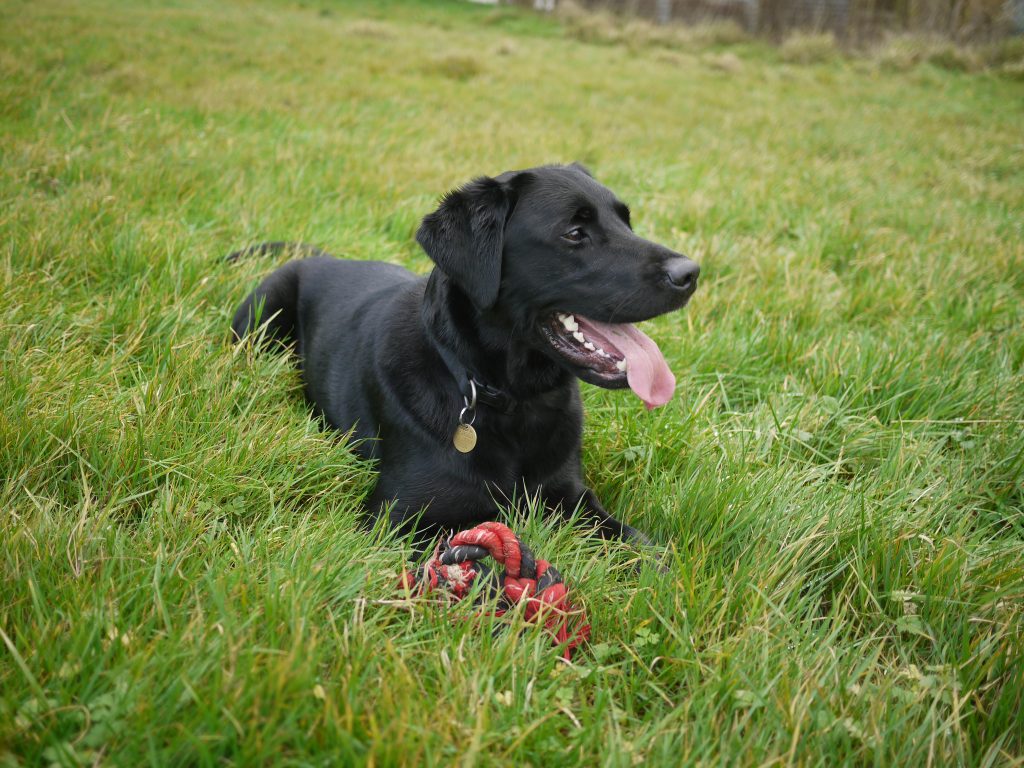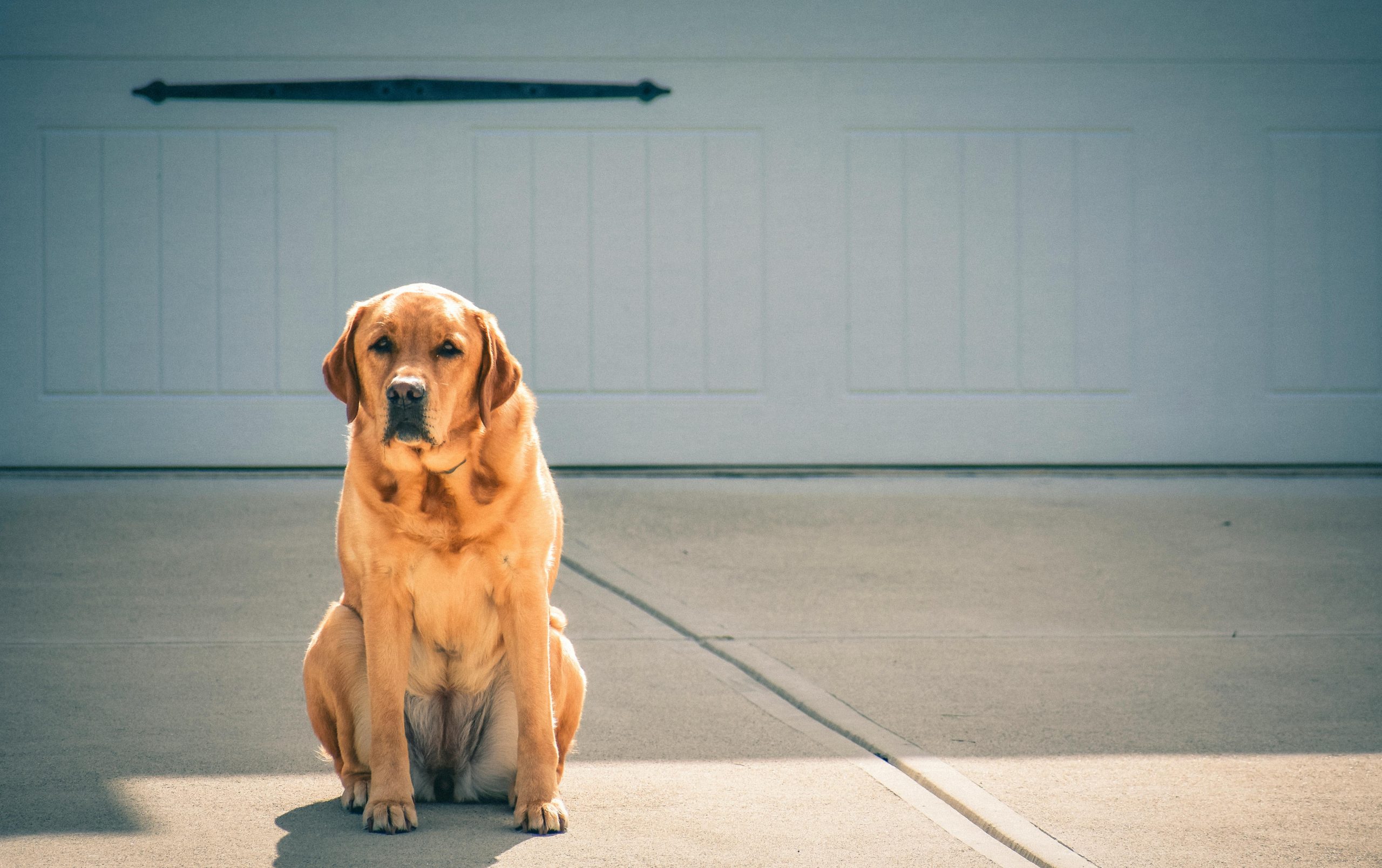Labrador retriever dogs, renowned for their amiable nature and versatile abilities, stand as one of the most popular dog breeds globally. In this exploration, we’ll delve into the captivating realm of Labradors, shedding light on their unique characteristics, temperament, and the role they play as beloved companions.
Labrador Retriever Dog – Essential Insights Before Adoption
If you’ve set your heart on bringing a Labrador Retriever dog into your home, it’s crucial to familiarize yourself with some fundamental aspects of this beloved breed:
History
Labrador Retrievers boast a rich and intriguing history that dates back to the rugged landscapes of Newfoundland, Canada. The breed’s origins can be traced to the 18th century, where they emerged as indispensable working companions for local fishermen. These early Labradors, often referred to as St. John’s Dogs, demonstrated an innate aptitude for water activities and an exceptional ability to retrieve objects from the sea. Their dense, water-resistant double coat and webbed paws attested to their suitability for the demanding maritime environment.
In the 19th century, the breed found its way to England, capturing the attention of British aristocracy. It was in England that the Labrador Retriever, as we know it today, began to take shape. Breeders selectively refined the characteristics of these dogs, emphasizing not only their exceptional swimming and retrieving skills but also their friendly temperament and intelligence.
Labradors quickly transitioned from their roles as working dogs to beloved companions, gaining popularity among families for their versatility and amiable nature. Recognized by the Kennel Club in England in 1903, Labradors solidified their place in the canine world. The breed’s journey continued across the Atlantic, where they became an integral part of American households, renowned for their adaptability and loyalty.
Over the decades, Labradors have excelled in various roles, from serving as assistance dogs for individuals with disabilities to becoming valued members of search and rescue teams. Their history is not merely a tale of breed development but a narrative of a loyal and versatile companion that has seamlessly integrated into the fabric of human society, leaving an indelible paw print on the hearts of dog lovers worldwide.
Temperament
One of the defining traits of the Labrador temperament is their remarkable intelligence. These dogs showcase an eagerness to learn, making them highly trainable and adaptable to various environments. Labradors are quick learners, and their problem-solving skills are often put to use in roles beyond mere companionship. This intelligence, coupled with an unwavering loyalty, positions Labradors as not just pets but trusted and responsive members of the family.
Labradors also exhibit an inherent love for activity and play, making them energetic and enthusiastic companions. Their playful disposition is a source of joy for those fortunate enough to share their lives with these dogs. Whether engaging in interactive games or outdoor adventures, Labradors thrive on physical activity and mental stimulation.
Furthermore, Labradors possess a natural affinity for water, a trait deeply rooted in their historical background as fishing companions. This love for water contributes to their excellence in activities like swimming, further enhancing their appeal as versatile and engaging pets.
In summary, the Labrador Retriever’s temperament is a harmonious blend of sociability, intelligence, loyalty, and playfulness. These dogs not only make excellent family pets but also excel in various roles, from assistance and therapy work to search and rescue operations. Labradors embody the ideal balance of traits, creating a canine companion that is not only loving and loyal but also dynamic and adaptable to the diverse lifestyles of their human counterparts.

Labrador Retriever dog Care and Maintenance
Physical activity is a key component of Labrador care, given their innate love for play and exercise. Daily walks, interactive play sessions, and the opportunity for off-leash activities contribute to the physical and mental stimulation that Labradors thrive on. Regular exercise not only aids in weight management but also helps prevent behavioral issues that may arise from boredom or excess energy.
Feeding
Providing the right nutrition is paramount to your Labrador Retriever’s health at every life stage – puppy, adult, or senior. Opt for high-quality dog food tailored to their age, ensuring they receive the necessary nutrients. Keep a close eye on their calorie intake to prevent weight issues, a common concern for Labrador. While treats are excellent for training, moderation is key to avoiding excessive weight gain.
Feeding Guidelines for Your Labrador Retriever dog
- 6 – 12 weeks: 4 meals/day, 1/2 – 1 cup per meal (lean meats like chicken or turkey; avoid chocolate).
- 3 – 6 months: 3 meals/day, 1 – 2 cups per meal (include fish like salmon or sardines; avoid grapes and raisins).
- 6 – 12 months: 2 meals/day, 2 – 4 cups per meal (introduce fruits like apples or blueberries; avoid onions and garlic).
- 1 year and older: 2 meals/day, 2 – 3 cups per meal (include vegetables like carrots or sweet potatoes; avoid caffeine).
Limit table scraps, especially cooked bones and fatty foods. Consult your vet if you have concerns about your dog’s weight or diet. Hydration is crucial for active Labrador Retrievers, so ensure a constant supply of fresh water, especially after exercise or on warm days.
Grooming and Bathing
Grooming is another vital aspect of Labrador care, considering their double coat. Brushing their coat at least a couple of times a week helps reduce shedding and keeps their fur in optimal condition. Labradors are known for their love of water, and occasional baths are recommended to keep their coat clean and free of odors.
- Use a high-velocity dryer before bathing to remove debris and loose hair.
- Employ grooming tools like an undercoat rake, stone, shedding blade, carding tool, or slicker brush during and after baths.
- Condition the coat after the final bath for optimal health.
- Ensure thorough drying, using a comb and heated dryer if needed.
Grooming Basics
Make grooming a positive experience by associating it with treats and positive interactions. Patience is key for a stress-free grooming routine. Follow these basics:
- Brushing: Regular brushing prevents matting and reduces shedding. Choose brushes suitable for their coat type.
- Nail Trimming: Regular nail trims prevent overgrowth. Exercise caution to avoid cutting too close to the edge.
- Ear Cleaning: Gently clean ears with a dog-specific ear cleaner and cotton ball, avoiding deep insertion.
- Dental Care: Brush their teeth with dog-friendly toothpaste and a toothbrush for oral health.
- Bathing: Choose a mild, dog-specific shampoo, ensuring lukewarm water to prevent discomfort.
By adhering to these care and maintenance practices, you’ll not only enhance your Labrador Retriever’s well-being but also foster a strong and loving bond.
Labrador Retriever dog Training and Exercise Guidelines
Physical activity is a key component of Labrador care, given their innate love for play and exercise. Daily walks, interactive play sessions, and the opportunity for off-leash activities contribute to the physical and mental stimulation that Labradors thrive on. Regular exercise not only aids in weight management but also helps prevent behavioral issues that may arise from boredom or excess energy.

Before Bringing a Puppy Home:
Explore Training Methods: Familiarize yourself with effective Labrador Retriever dog training techniques.
Family Preparation: Ensure everyone in the family is committed to consistent training efforts.
Early Exposure: Introduce the puppy to diverse surfaces, objects, locations, and people for well-rounded socialization.
Things to Keep In Mind:
Session Length: Opt for short, frequent training sessions over prolonged ones for increased effectiveness.
Positive Reinforcement: Consistently use positive reinforcement as the foundation for successful training.
Outdoor Break Routine: Establish a routine for outdoor breaks to reinforce good potty habits.
Supervision: Keep a vigilant eye on the puppy to prevent the development of undesirable habits.
Crate Training: Help the puppy associate the crate as a secure and comfortable space.
Training Tips:
Alpha Positioning: Establish yourself as the leader by walking in front, eating before the dog, and having the dog come to you.
Sound Conditioning: Introduce the puppy to various sounds early on and teach them to follow your lead.
Listening Skills: Pay attention to the puppy’s comfort level, acknowledging that training is a gradual process.
Provide Freedom: Allow the puppy ample time for free play and use positive reinforcement to reward good behavior.
Training is an ongoing commitment, and reinforcing learned commands throughout the dog’s life is crucial. Consult with the breeder about their training techniques and consider exploring Labrador Retriever dog training programs for additional support.
Exercise Guidelines: While exercise is crucial for Labrador Retriever puppies, caution is paramount to avoid joint injuries, considering the delicate growth plates in their legs.
Activities to Avoid:
Jumping from heights.
Twisting too fast.
Consistent repetition of the same activity.
Extended periods of high-energy play.
During Puppy’s First Months (0-12 Weeks):
Limit exercise to 5 minutes per month of age.
Reinforce good manners and positive social play.
Socialize with family members and other pets, closely monitoring interactions.
During the Teenage Phase (16-24 Weeks):
Expect challenging behaviors as the puppy tests boundaries.
Set up an exercise playpen with toys, food, and water for safe play.
When they become 6-12 Months old:
Energy levels increase, requiring a balance of physical and mental exercise.
Suitable activities include short walks, off-leash yard play, chew toys, hide and seek, fetch, and puzzle toys.
By adhering to these training and exercise guidelines, you’ll ensure the well-being and development of a happy and well-adjusted Labrador Retriever dog.
We assure that, you will get best Labrador Retriever puppies @ Bangalorepaws. Contact Asaph Collins – 8147765705
Benefits of Choosing a Labrador Retriever dog
Exceptional Family Companions
The unparalleled devotion and loyalty of Labrador Retrievers make them outstanding family companions. Their gentle nature and patience around children create an environment of trust and love within the household.
Versatility in Roles
From therapy dogs to service animals, Labrador Retrievers excel in various roles. Their adaptability and ability to connect with people make them invaluable in assisting individuals with different needs.
Why Choose a Labrador Retriever dog?
Labrador Retrievers dog forge deep bonds with their owners, displaying loyalty that goes beyond the ordinary. This unwavering commitment makes them more than just pets; they become cherished members of the family.
Positive Impact on Mental Well-being
Research has shown that the presence of a Labrador Retriever can have a positive impact on mental health. Their companionship helps reduce stress and anxiety, fostering a sense of emotional well-being.
Make an Enquiry with thebangalorepaws
Frequently Asked Questions (FAQ) About Labrador Retrievers
- What is the typical lifespan of a Labrador Retriever?
- Labradors generally have a lifespan ranging from 10 to 14 years. However, factors such as genetics, diet, and overall healthcare play crucial roles in determining an individual dog’s longevity.
- Are Labradors good with children and other pets?
- Labradors are renowned for their friendly and gentle nature, making them excellent companions for families with children. They typically get along well with other pets, showcasing adaptability and sociability.
- How much exercise do Labradors require daily?
- Labradors are an energetic breed that thrives on physical activity. On average, they require at least 30 to 60 minutes of exercise daily. Regular walks, playtime, and mentally stimulating activities contribute to their overall well-being.
- Is Labrador Retriever dog training challenging?
- Labradors are known for their intelligence and eagerness to please, making training a generally enjoyable experience. Consistency, positive reinforcement, and early socialization contribute to successful training outcomes.
- What is the grooming routine for Labradors?
- Labradors have a short, dense double coat that requires regular brushing to minimize shedding. Occasional baths, nail trimming, and ear cleaning are also part of their grooming routine. However, Labradors are not high-maintenance in terms of grooming compared to some other breeds.
Also read related article
